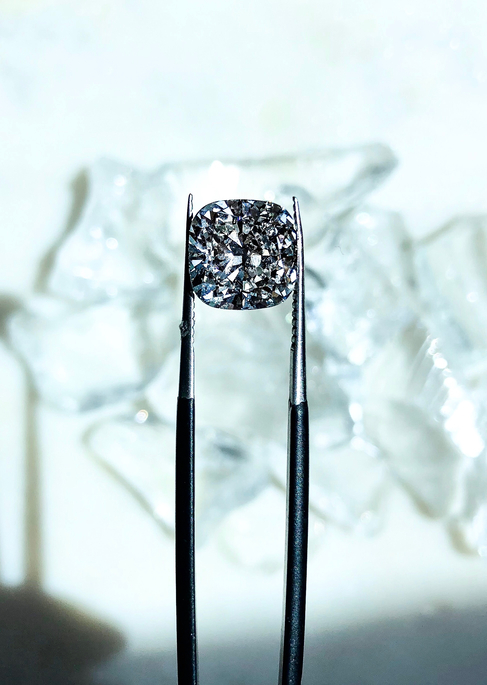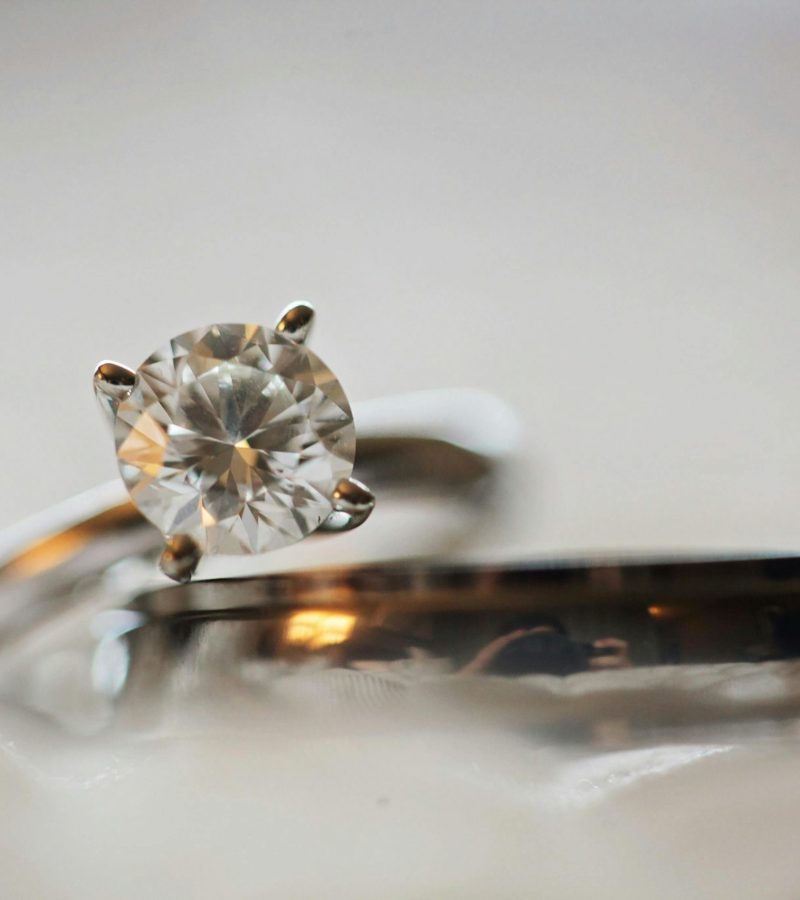ABOUT LAB GROWN DIAMOND
The Future and Present of the Diamond Industry

Why Lab-Grown Diamonds?
The Process of Lab-Grown Diamonds
High Pressure High Temperature (HPHT) Method
- Seed Placement: A small diamond seed is placed into a growth chamber along with a carbon source, typically graphite.
- High Pressure Application: The chamber is subjected to extreme pressures, typically around 5–6 GPa, which is similar to the pressure found deep within the Earth’s mantle.
- High Temperature Application: Temperatures in the chamber are raised to around 1,300–1,600 °C (2,372-2,912 °F).
- Diamond Growth: Under these conditions, the carbon source melts and starts to form a diamond around the seed. Over several days to weeks, carbon atoms deposit onto the seed, gradually forming a larger diamond crystal.
- Cooling: The temperature and pressure are gradually reduced, allowing the diamond to stabilize and solidify.
Chemical Vapor Deposition (CVD) Method
- Seed Preparation: A thin slice of diamond seed is placed in a vacuum chamber.
- Introduction of Gases: A mixture of gases, typically methane (CH4) and hydrogen (H2), is introduced into the chamber.
- Ionization: The gases are ionized into plasma using microwave power or other forms of energy, breaking down the molecular bonds.
- Diamond Growth: Carbon atoms are freed from the methane and deposit onto the diamond seed layer by layer. The hydrogen atoms help prevent non-diamond carbon formations.
- Formation: Over days to weeks, these carbon atoms build up on the seed, forming a high-quality diamond crystal.
- Post-Growth Treatment: The diamond is removed from the chamber and undergoes additional treatments, such as polishing and cutting, to achieve the desired shape and clarity.
- Seed Placement: A small diamond seed is placed into a growth chamber along with a carbon source, typically graphite.
- High Pressure Application: The chamber is subjected to extreme pressures, typically around 5–6 GPa, which is similar to the pressure found deep within the Earth’s mantle.
- High Temperature Application: Temperatures in the chamber are raised to around 1,300–1,600 °C (2,372-2,912 °F).
- Diamond Growth: Under these conditions, the carbon source melts and starts to form a diamond around the seed. Over several days to weeks, carbon atoms deposit onto the seed, gradually forming a larger diamond crystal.
- Cooling: The temperature and pressure are gradually reduced, allowing the diamond to stabilize and solidify.
Quality and Certification
Both HPHT and CVD diamonds undergo rigorous quality checks and certification processes. Organizations like the International Gemological Institute (IGI) and the Gemological Institute of America (GIA) certify lab-grown diamonds to ensure they meet high standards of quality and authenticity.


Advantages of Lab-Grown Diamonds
Not even a trainer jeweller can tell the diff between lab grown and mined diamond. They are typically less expensive than natural diamonds of equivalent quality.
Lab-grown diamonds do not involve mining, which reduces environmental impact and ethical concerns associated with traditional diamond mining.
Lab-grown diamonds are chemically, physically, and optically identical to natural diamonds.
Like natural diamonds, lab-grown diamonds follow the same 4Cs

Diamond Cut
The cut of a diamond significantly influences its brilliance. This term describes how well a diamond’s facets interact with light, not just its shape (such as round, heart, or oval). The cut grade assesses the diamond’s proportions, symmetry, and polish to maximize its light return. Key aspects affected by the cut include:
- Brightness: The reflection of white light within and from the diamond.
- Fire: The dispersion of light into a spectrum of colors.
- Scintillation: The sparkle and pattern of light and dark areas caused by internal reflections.
The cut is essential for a diamond’s visual appeal and value, requiring meticulous craftsmanship to enhance its light performance.
Diamond Carat Weight
Carat weight measures a diamond’s size, with one carat equal to 200 milligrams. Larger diamonds are generally more expensive due to their rarity. However, the diamond’s overall value depends on all 4Cs—Carat Weight, Clarity, Color, and Cut—not just its size.


Diamond Color Grade
Diamond Clarity
Clarity assesses a diamond’s purity by examining inclusions and blemishes. Diamonds are graded based on the number, size, and visibility of these imperfections, affecting their overall appearance. The clarity scale includes various grades:
- Flawless (FL): No visible inclusions or blemishes under 10x magnification.
- Internally Flawless (IF): No internal inclusions, though minor surface blemishes may be present.
- Very, Very Slightly Included (VVS1 and VVS2): Inclusions are extremely difficult to see even for a trained grader.
- Very Slightly Included (VS1 and VS2): Inclusions are visible with some effort under 10x magnification.
- Slightly Included (SI1 and SI2): Inclusions are noticeable under 10x magnification.
Included (I1, I2, and I3): Inclusions are apparent under magnification and may impact the diamond’s transparency and brilliance.





